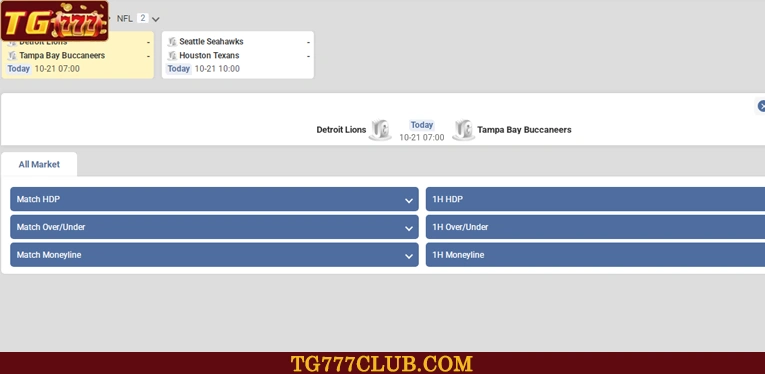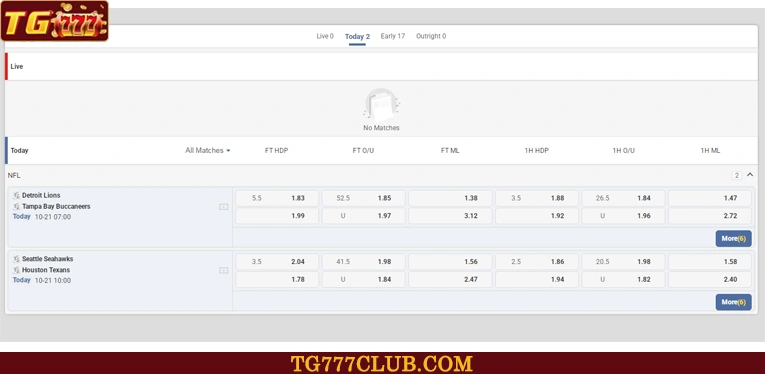Learn how to win Asian handicap betting soccer in the Philippines with proven strategies, odds analysis, bankroll rules, and live-betting tactics. Practical tips tailored to Philippine bettors at TG777 bookmaker.

If you’re serious about how to win Asian handicap betting soccer in the Philippines, you need more than luck—you need an edge. Asian handicap betting is designed to level the playing field by removing the draw and applying handicaps that reflect the difference in team strength. For Philippine bettors, this market can offer consistent value when you combine smarter odds reading, disciplined bankroll management, and a repeatable process that captures price mistakes. This guide demystifies Asian handicap soccer, shows you how to spot value before and during matches, and provides tactical steps to turn good insights into long-term returns.
What Is Asian Handicap Betting (AH) & Why It Matters
At its core, Asian handicap soccer eliminates the draw and assigns a goal handicap to one team. That handicap can be whole (e.g., -1, +1), half (-0.5, +0.5), or quarter (-0.25, +0.25, -0.75, +0.75). Quarter lines split your stake across two adjacent half-lines, creating half-win and half-loss possibilities that reduce volatility. For example, if you back +0.25, half your stake is on +0 (level ball) and half on +0.5. If the match ends in a draw, your +0 half pushes (stake returned) while your +0.5 half wins—this “safety net” is one reason many pros favor quarter lines.
Understanding these mechanics is foundational for anyone learning how to win Asian handicap betting soccer in the Philippines. You’re managing risk more precisely than with 1X2 markets, and that matters in fast-moving leagues and live settings.
Reading Odds: Decimal Prices, Implied Probability, and Payout
Philippine bettors usually encounter decimal odds. Converting odds to implied probability helps you compare your estimate vs the market. Implied probability ≈ 1 / decimal odds (ignoring the vig)—if a price is 1.80, the implied probability is ~55.6%. When your assessed probability is higher than the implied number, you’ve found value.
To consistently act on how to win Asian handicap betting soccer in the Philippines, price shopping is non-negotiable. A shift from 1.80 to 1.85 might seem minor, but over hundreds of bets, these small edges compound, especially with low-variance quarter-handicaps.
Finding Value in the Philippines Market
Local market rhythms favor bettors who prepare early. Weekends bring stacked European fixtures; midweeks feature cups and Asian leagues. Lines move with lineup leaks, travel schedules, or rotation due to congested calendars. To secure closing line value (CLV)—a strong predictor of long-term profitability—aim to beat the final price. If you consistently bet +0.5 @ 1.92 and it closes +0.5 @ 1.84, you captured market value.
In practice, winning Asian handicap betting in the Philippines means tracking:
- Team news: late injuries, suspensions, or rotation
- Travel fatigue: long trips, delayed flights, short recovery windows
- Fixture congestion: three games in six days often depress pressing intensity
- Weather/pitch: heavy rain or slow turf can suppress big-favorite dominance
Pre-Match Analysis That Actually Wins
Look beyond “last five results.” Use performance indicators:
- xG/xGA and shot quality: teams overpriced by lucky finishing will regress
- Tactical matchups: high press vs build-from-back; aerial strength vs set-piece vulnerability
- Home/away splits: some squads travel poorly (time zones, smaller squads)
- Referee tendencies: strict refs increase card risk (affects late pressure and game state)
- Motivation: title chase, relegation fight, or mid-table apathy
This depth improves your intuition on favorites vs underdogs handicap decisions and feeds straight into how to win Asian handicap betting soccer in the Philippines with repeatable criteria.
Mastering Quarter-Handicaps (±0.25, ±0.75)
Quarter lines are your volatility control:
- +0.25 underdog: suits tight matches where the dog’s defense is organized; a draw yields half-win
- -0.25 favorite: for modest edges when the favorite should edge it but variance is high
- +0.75: protects against narrow losses (lose by one goal is half-loss); ideal when dogs keep games close
- -0.75: for favorites likely to win by one or two; a one-goal win is half-win
If you’re focused on how to win Asian handicap betting soccer in the Philippines, these lines reduce downswings and smooth your bankroll curve.
Bankroll Management for Long-Term Profit
Great picks fail without discipline. Establish units (e.g., 1–2% of bankroll per bet). Consider Kelly Criterion to scale stakes with edge—but cap it (e.g., half-Kelly) to control variance. Use daily and weekly loss caps to avoid tilt. Never chase losses with bigger lines (e.g., escalating from -0.25 to -1.5)—that undermines even the best Asian handicap betting strategy.
Live (In-Play) Asian Handicap Edges
Live markets often lag reality:
- Dominance without goals: heavy shot volume and penalty-box entries support a late -0.25 or -0.5 favorite
- Red cards: reassess immediately; a favored team going down to 10 can flip value to +0.5 or +0.75 for the opponent
- Early goals: overreactions happen—after an underdog scores early, consider favorite -0.25 at a better price if underlying dominance remains
- Fatigue patterns: teams with short rest fade after 70’; late -0.25 can be profitable if momentum and subs favor the stronger bench
If your goal is how to win Asian handicap betting soccer in the Philippines, build a live checklist (shots, xThreat, field tilt, big chances) and act when numbers and eye test align.
Model-Assisted Betting Without Coding
You can approximate a pricing model in a spreadsheet:
- Create team ratings updated weekly
- Adjust for home advantage and injuries
- Convert rating differences into fair handicaps and fair odds
- Compare to market odds to detect overlays
Track each bet versus closing line to learn where your edge comes from—certain leagues, time windows, or team styles. This is the practical backbone of value betting soccer and essential for anyone serious about how to win Asian handicap betting soccer in the Philippines.

Mistakes Philippine Bettors Must Avoid
- Chasing: doubling stakes after losses
- Overvaluing favorites: paying premiums on public teams
- Ignoring the vig: small margins add up; always compare books
- Recency bias: one big win doesn’t mean form is permanent
- Parlay addiction: parlays raise variance; keep them rare and small
Compliance, Safer Gambling, and Local Context
Always follow local regulations and age requirements. Use responsible gambling tools: deposit limits, time-outs, and reality checks. Your objective isn’t daily wins—your objective is consistent decision quality that compounds over months. That’s the sustainable route to how to win Asian handicap betting soccer in the Philippines.
Action Plan: 7-Day Ramp-Up
- Day 1–2: Build a pre-match checklist (team news, xG/xGA, travel, weather, referee)
- Day 3: Set bankroll and unit size; decide your stake curve (flat or capped Kelly)
- Day 4: Create a simple rating spreadsheet; back-check last two match weeks
- Day 5: Identify two leagues to specialize in (data availability + schedule fit)
- Day 6: Practice live-bet triggers during one televised match
- Day 7: Place 2–3 micro-stakes following your full process; log results, compare to CLV
Re-evaluate weekly. Tighten the checklist. Improve timing to capture CLV. This continual refinement is the most realistic way to execute how to win Asian handicap betting soccer in the Philippines without overreacting to short-term noise.
FAQ
Q1: What’s the most beginner-friendly path to learn Asian handicap—where should I start, and how do I avoid common traps in my first 30 bets?
Start with the simplest lines and a very small, fixed stake. Focus on level ball (0) and half-lines (±0.5) before touching quarter-handicaps. For your first 30 bets:
- Build a one-page pre-match checklist: team news (injuries, suspensions, rotation), recent xG/xGA trend, home/away splits, travel distance + rest days, weather/pitch notes, and referee tendencies.
- Bet only leagues you can follow closely (e.g., your top two leagues), and only when two or more checklist items signal an edge.
- Stake 1–2% of your bankroll per bet (flat staking). Do not parlay.
- Record each pick with the line and price you took and the closing line; your goal is to consistently beat the closing price.
- Avoid traps: do not bet just because a favorite “should win,” do not chase losses, and do not raise stakes after a bad day.
Graduation criteria after 30 bets: you are beating the closing line more often than not, and your losses (if any) are modest due to proper bankroll management. Only then add quarter-handicaps (±0.25/±0.75) for finer risk control.
Q2: How exactly do I identify a value bet in Asian handicap—can you walk me through numbers, not just theory?
Yes. Treat every wager as a pricing exercise.
- Convert decimal odds to implied probability: implied ≈ 1 / odds. A line at 1.90 implies ~52.63%.
- Create your fair probability using a simple model: start with team ratings (home advantage + recent form), adjust for team news (key starters ±2–5 percentage points), schedule fatigue (±1–3 pts), and match context (must-win vs rotation).
- If your fair probability is higher than the market’s implied probability by at least 2–3 points after accounting for the book’s vig, it’s potential value.
Example: You price the favorite -0.25 at 56% fair. Market offers 1.95 (implied ~51.28%). Edge ≈ 56 − 51.28 = 4.72 pts → green light. - Track outcomes vs closing line value (CLV): if you regularly take -0.25 @ 1.95 that later closes -0.25 @ 1.85, your edge is real even if a few results go against you.
Tip: Maintain a small odds-comparison habit—shaving an extra 0.03–0.05 off the price on each bet compounds dramatically over a season.
Q3: Quarter-handicaps (±0.25/±0.75) still confuse me—when should I prefer them over half- or whole-handicap lines?
Quarter-handicaps split your stake across adjacent lines, smoothing variance and protecting your bankroll during close matches. Choose them when the matchup has signal but also meaningful uncertainty:
- +0.25 underdogs: Tight, low-scoring expectations; organized defense; good set-piece resistance. A draw gives half-win, and a one-goal defeat limits damage compared to riskier lines.
- -0.25 favorites: Modest edge where you expect to “nick it” but variance is high (e.g., heavy schedule, away pitch, or tricky weather). A draw returns half-loss only, not a full loss like -0.5.
- +0.75 dogs: Expect a competitive game; losing by exactly one results in half-loss instead of full. Great when the favorite lacks finishing or the dog is sturdy until late.
- -0.75 favorites: You project a one-goal win most often but see clear paths to two. If they win by one, you still get half-win.
Rule of thumb: if your analysis says the most likely margins cluster around 0 to ±1, quarter-handicaps deliver better risk-adjusted outcomes than half/whole lines.
Q4: When is live (in-play) Asian handicap betting actually +EV, and what data should I rely on in real time?
Live edges appear when price lags performance. Look for measurable dominance that the market hasn’t fully priced in yet:
- Chance creation: shots on target, big chances, xG accumulation per minute, repeated entries into the penalty area, and set-piece pressure. A favorite creating sustained threat but still 0–0 may become a value -0.25/-0.5 after 55–70 minutes.
- Game state shocks: red cards, early goals, injuries. If a strong favorite concedes early but continues to dominate, the comeback -0.25 can be underpriced. Conversely, a red card to the favorite can flip value to +0.5/+0.75 for the dog.
- Fatigue windows: teams on short rest fade after 70’; if subs improve a favorite’s press and final-third entries spike, late -0.25 becomes attractive.
- Context filter: don’t live-bet off vibes alone. Confirm the eye test with metrics (shot quality > shot count, box entries, progressive passes, touches in the area).
Execution tips: pre-set triggers (e.g., “If xG ≥ 1.2 by 60’ but score 0–0 and fav ML drifted 0.10+, probe -0.25”), limit to one or two in-play bets per match, and always cap stake lower than pre-match size to respect higher variance.
Q5: What comprehensive risk and bankroll plan should a Philippine bettor use to sustain profits over a season—and how do I know when to scale up?
Use a three-layer framework: structure, limits, and feedback.
- Structure: Define a bankroll (money you can afford to lose). Stake a fixed 1–2% per bet for your first 200 bets. Log every pick: league, line, price, timestamp, rationale tags (news, xG edge, travel), and CLV vs close.
- Limits: Daily loss cap (e.g., 3–5 units), weekly stop (e.g., 8–10 units), and hard rules: no chasing, no adding legs to parlays to recover, no doubling stakes after losses.
- Feedback: Review weekly. Which leagues, kick-off windows, and bet types beat CLV most? Trim the rest. If you beat CLV over 300+ bets and your P/L aligns within expected variance, consider scaling to 1.5–2.5% per bet or introduce capped-Kelly (¼- to ½-Kelly) only on your clearest edges.
- Protection: Prefer quarter-handicaps in volatile or low-margin reads, and avoid loading multiple bets on the same game state (correlated risk).
- Sustainability: Schedule “no-bet” days, set deposit/time limits, and keep sport a side activity—not a financial necessity. The goal is process quality; profits follow over the long run, not every weekend.

Conclusion
Winning in Asian handicap betting hinges on three pillars: sharp pre-match analysis, disciplined bankroll control, and selective live entries when the market lags reality. Use quarter-handicaps to manage variance, compare odds to capture CLV, and keep detailed records to refine your edge. With patience and process, you can execute how to win Asian handicap betting soccer in the Philippines in a sustainable, responsible way.
Read more:
- How To Bet On Football At TG777: A Complete Guide
- Virtual Sports Betting At TG777: A Thrilling Experience Awaits
